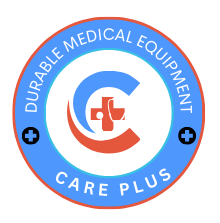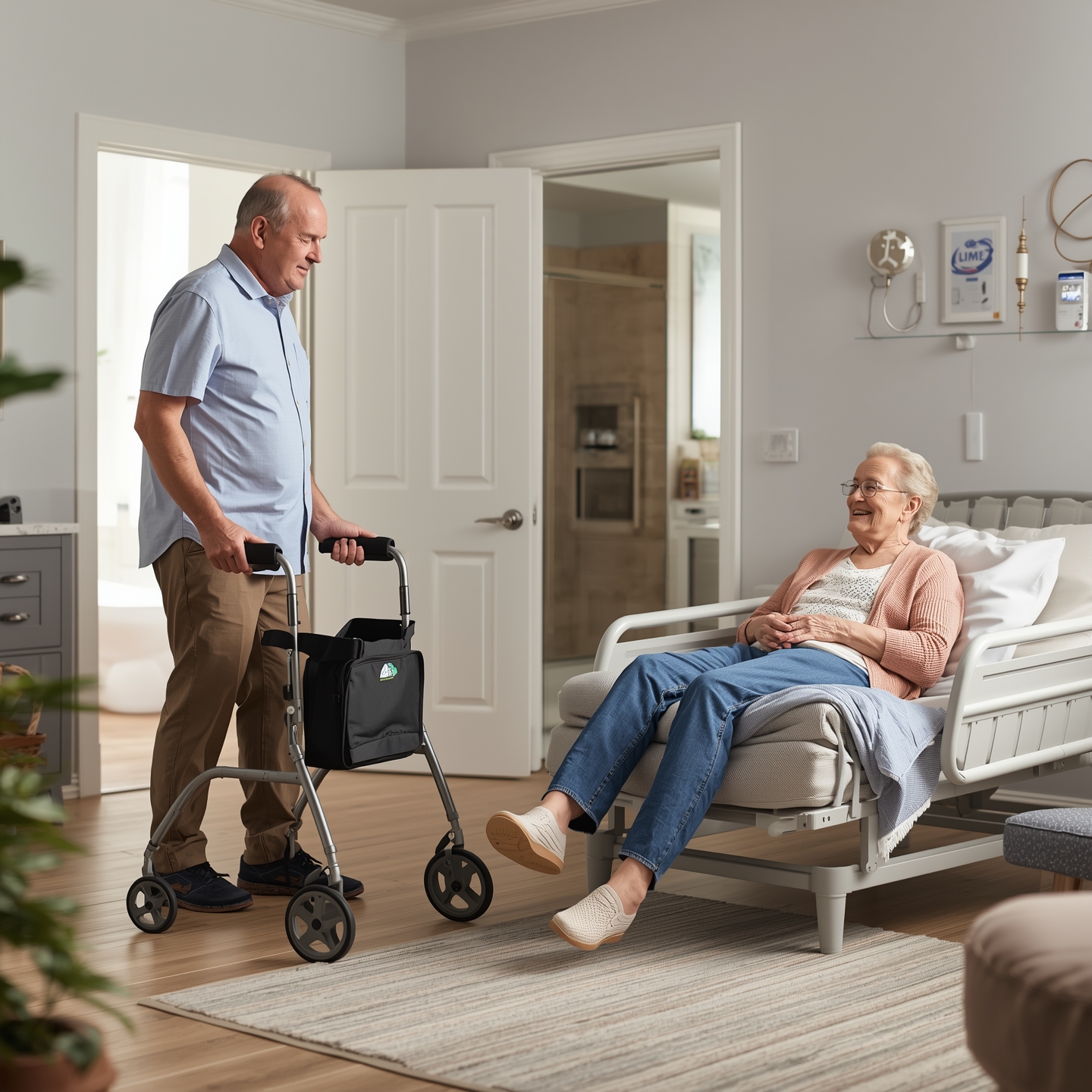Durable Medical Equipment for Seniors: Making Life Easier in 2025
DME for Seniors: Your 2025 Guide to Easier Living
Senior care equipment 2025
Senior care equipment 2025 is transforming how older adults live safer, healthier, and more independent lives. As we grow older, maintaining independence and quality of life becomes a top priority. With the U.S. Census Bureau projecting that all baby boomers will be over 65 by 2030, the need for supportive solutions is greater than ever. This is where durable medical equipment (DME) plays a crucial role. As we grow older, maintaining independence and a high quality of life becomes a top priority. For many, this means finding new ways to navigate daily activities safely and comfortably at home. With the U.S. Census Bureau projecting that all baby boomers will be over 65 by 2030, the need for supportive solutions is greater than ever. This is where durable medical equipment (DME) plays a crucial role.
According to reports from the AARP, a staggering 90% of seniors prefer to age in place. DME makes this possible by providing the necessary support to manage health conditions, prevent accidents, and maintain independence. From simple mobility aids to advanced monitoring systems, these tools are essential for enhancing the safety and well-being of older adults.
This guide will walk you through the world of durable medical equipment, explaining what it is, its benefits, and how to choose the right options. We’ll also look at the exciting technological advancements shaping the future of DME in 2025 and beyond, helping you and your loved ones make informed decisions for a safer, more independent life.
What is Durable Medical Equipment (DME)?
Durable Medical Equipment (DME) refers to any medical equipment that helps individuals with certain medical conditions or challenges carry out their daily living activities. To be classified as DME, the equipment must be durable (can withstand repeated use), serve a medical purpose, and be appropriate for use in the home. These devices are prescribed by healthcare providers to improve safety, mobility, and overall quality of life.
The primary purpose of DME is to support individuals dealing with mobility issues, chronic conditions, or recovery from an injury or surgery. By providing stability, reducing physical strain, and monitoring health, DME helps older adults live more independently and with greater peace of mind.
The Life-Changing Benefits of DME
Integrating DME into a senior’s home can have a profound impact. Studies published in the Journals of Gerontology have shown a direct correlation between DME usage and increased independence, along with reduced hospital readmissions.
Key benefits include:
- Improved Mobility: Devices like walkers and wheelchairs empower seniors to move around more freely and safely, both inside and outside the home.
- Enhanced Safety: The risk of falls is a major concern for older adults. The CDC reports that over 36 million older adults fall each year. Bathroom safety equipment and medical alert systems can significantly reduce this risk.
- Greater Independence: With the right support, seniors can continue to perform tasks of daily living on their own, from bathing to preparing meals, which is vital for their mental and emotional well-being.
- Effective Health Management: For those with chronic conditions, DME like hospital beds or oxygen equipment allows for better management of their health from the comfort of their home.
Essential Types of DME for Seniors
DME covers a wide range of products designed to address various needs. Here are some of the most common categories and examples from trusted brands.
Mobility Aids
Mobility is often one of the first challenges seniors face. Mobility aids help maintain an active and engaged lifestyle.
- Walkers and Canes: Provide stability for those who are unsteady on their feet.
- Wheelchairs and Scooters: For individuals with more significant mobility limitations, brands like Invacare offer a range of manual and powered wheelchairs and mobility scooters that provide freedom and independence.
Bathroom Safety
The bathroom is a high-risk area for falls. Bathroom safety equipment is crucial for prevention.
- Shower Chairs and Benches: Offer a secure place to sit while bathing, reducing the risk of slipping.
- Grab Bars: Installed near toilets and in showers, these provide crucial support.
- Elevated Toilet Seats: Make it easier to sit down and stand up from the toilet. Drive Medical is a well-known brand offering reliable bathroom safety solutions.
Home Monitoring Systems
For seniors living alone, home monitoring systems provide a vital safety net.
- Medical Alert Systems: These systems, which often include a wearable button, provide a quick way to call for help in an emergency. Philips Lifeline is a leading provider of medical alert systems with features like automatic fall detection, offering peace of mind for both seniors and their families.
Hospital Beds and Accessories
For individuals with chronic conditions or those recovering from surgery, a specialized bed can make a significant difference in comfort and care.
- Adjustable Hospital Beds: These beds can be adjusted to various positions to improve comfort and assist with mobility. Medline offers a variety of home hospital beds and accessories, such as supportive mattresses and overbed tables, to create a safe and comfortable recovery environment.
How to Choose the Right DME
Selecting the right DME is a critical decision that should be based on individual needs and circumstances.
- Assess Specific Needs: Identify the daily challenges you or your loved one face. Is it difficulty walking, fear of falling in the shower, or managing a chronic illness?
- Consult Healthcare Providers: A doctor, physical therapist, or occupational therapist can provide a professional assessment and recommend the most appropriate DME. They are a crucial resource for navigating your options.
- Consider the Home Environment: Evaluate the layout of the home. Will a wheelchair fit through the doorways? Are the walls strong enough to support grab bars?
- Prioritize Ease of Use: The equipment should be user-friendly. Complicated devices may go unused, defeating their purpose.
Paying for DME: Insurance and Other Options
The cost of DME can be a concern, but there are several payment options available. Medicare data consistently shows a rise in DME claims, indicating a growing reliance on these devices.
- Medicare: Medicare Part B typically covers 80% of the approved amount for medically necessary DME, provided your doctor and DME supplier are enrolled in Medicare.
- Medicaid: Coverage varies by state, but Medicaid often covers DME for eligible individuals with low income.
- Private Insurance: Many private insurance plans offer coverage for DME. It’s important to check with your provider to understand the specifics of your policy.
The Future is Smart: DME Trends for 2025
Technology is revolutionizing durable medical equipment, making it smarter, more personalized, and more integrated into our lives.
- Smart DME with IoT: Internet of Things (IoT) connectivity allows devices to collect and transmit data to caregivers or healthcare providers, enabling remote monitoring of health and equipment status.
- AI-Powered Adaptation: Artificial intelligence will enable DME to learn and adapt to a user’s habits and needs in real-time, providing personalized support. For example, a smart walker could adjust its level of assistance based on the user’s gait.
- Telehealth Integration: DME will increasingly connect with telehealth platforms, allowing for virtual consultations and remote adjustments by healthcare professionals.
- 3D-Printed Customization: 3D printing technology will make it possible to create custom-fit DME, ensuring maximum comfort and effectiveness for the user.
Taking the Next Step Towards Independence
Durable medical equipment is more than just a set of tools; it’s a pathway to maintaining independence, safety, and a high quality of life for older adults. By carefully assessing needs and exploring the available options, you can find the right solutions to support aging in place with confidence.
Ready to learn more?
- Consult with a healthcare provider to assess your DME needs and eligibility.
- Explore our comprehensive guide to discover the full range of DME options available.
- Share this article with friends and family who could benefit from this information.




